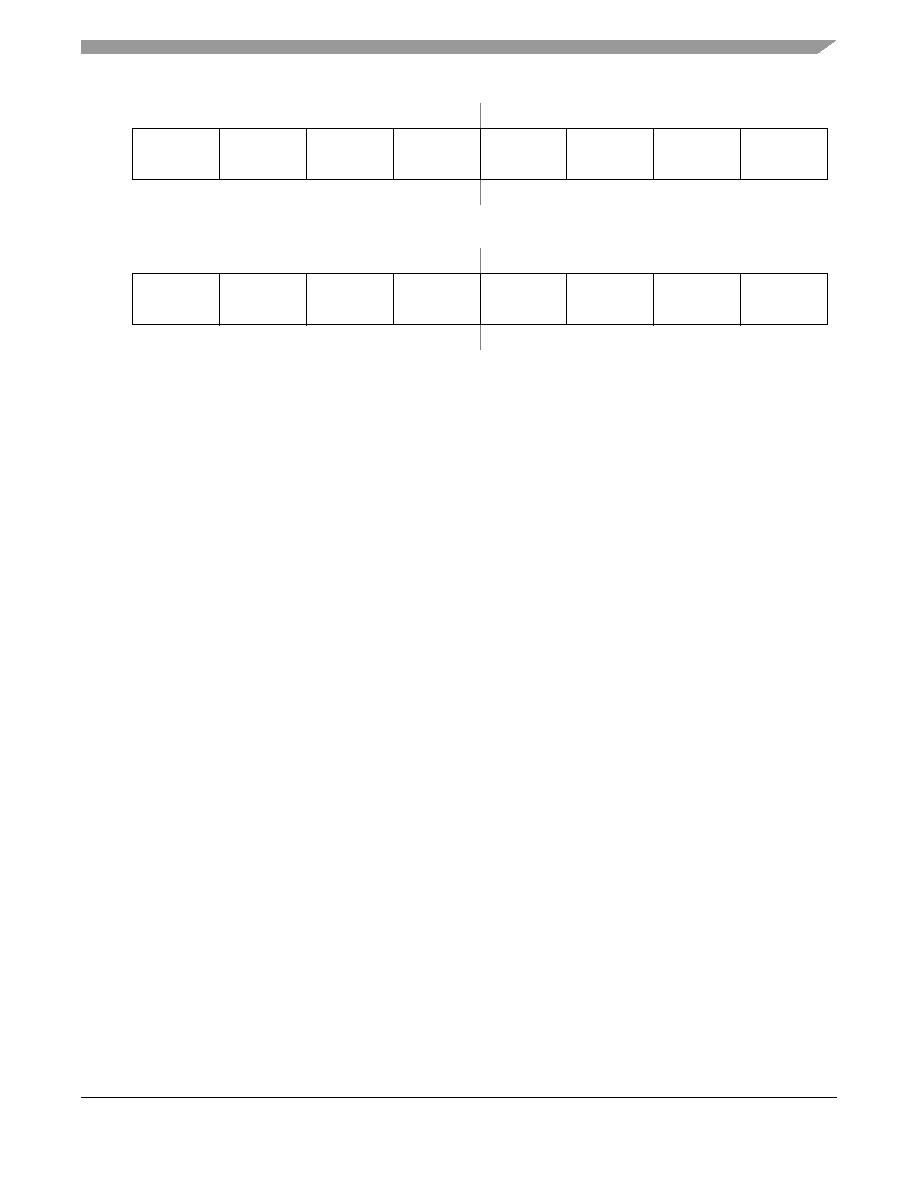- 您現(xiàn)在的位置:買賣IC網(wǎng) > PDF目錄45292 > MC9S08SG32MTJ (FREESCALE SEMICONDUCTOR INC) 8-BIT, FLASH, 40 MHz, MICROCONTROLLER, PDSO20 PDF資料下載
參數(shù)資料
| 型號: | MC9S08SG32MTJ |
| 廠商: | FREESCALE SEMICONDUCTOR INC |
| 元件分類: | 微控制器/微處理器 |
| 英文描述: | 8-BIT, FLASH, 40 MHz, MICROCONTROLLER, PDSO20 |
| 封裝: | ROHS COMPLIANT, TSSOP-20 |
| 文件頁數(shù): | 172/328頁 |
| 文件大小: | 3232K |
| 代理商: | MC9S08SG32MTJ |
第1頁第2頁第3頁第4頁第5頁第6頁第7頁第8頁第9頁第10頁第11頁第12頁第13頁第14頁第15頁第16頁第17頁第18頁第19頁第20頁第21頁第22頁第23頁第24頁第25頁第26頁第27頁第28頁第29頁第30頁第31頁第32頁第33頁第34頁第35頁第36頁第37頁第38頁第39頁第40頁第41頁第42頁第43頁第44頁第45頁第46頁第47頁第48頁第49頁第50頁第51頁第52頁第53頁第54頁第55頁第56頁第57頁第58頁第59頁第60頁第61頁第62頁第63頁第64頁第65頁第66頁第67頁第68頁第69頁第70頁第71頁第72頁第73頁第74頁第75頁第76頁第77頁第78頁第79頁第80頁第81頁第82頁第83頁第84頁第85頁第86頁第87頁第88頁第89頁第90頁第91頁第92頁第93頁第94頁第95頁第96頁第97頁第98頁第99頁第100頁第101頁第102頁第103頁第104頁第105頁第106頁第107頁第108頁第109頁第110頁第111頁第112頁第113頁第114頁第115頁第116頁第117頁第118頁第119頁第120頁第121頁第122頁第123頁第124頁第125頁第126頁第127頁第128頁第129頁第130頁第131頁第132頁第133頁第134頁第135頁第136頁第137頁第138頁第139頁第140頁第141頁第142頁第143頁第144頁第145頁第146頁第147頁第148頁第149頁第150頁第151頁第152頁第153頁第154頁第155頁第156頁第157頁第158頁第159頁第160頁第161頁第162頁第163頁第164頁第165頁第166頁第167頁第168頁第169頁第170頁第171頁當前第172頁第173頁第174頁第175頁第176頁第177頁第178頁第179頁第180頁第181頁第182頁第183頁第184頁第185頁第186頁第187頁第188頁第189頁第190頁第191頁第192頁第193頁第194頁第195頁第196頁第197頁第198頁第199頁第200頁第201頁第202頁第203頁第204頁第205頁第206頁第207頁第208頁第209頁第210頁第211頁第212頁第213頁第214頁第215頁第216頁第217頁第218頁第219頁第220頁第221頁第222頁第223頁第224頁第225頁第226頁第227頁第228頁第229頁第230頁第231頁第232頁第233頁第234頁第235頁第236頁第237頁第238頁第239頁第240頁第241頁第242頁第243頁第244頁第245頁第246頁第247頁第248頁第249頁第250頁第251頁第252頁第253頁第254頁第255頁第256頁第257頁第258頁第259頁第260頁第261頁第262頁第263頁第264頁第265頁第266頁第267頁第268頁第269頁第270頁第271頁第272頁第273頁第274頁第275頁第276頁第277頁第278頁第279頁第280頁第281頁第282頁第283頁第284頁第285頁第286頁第287頁第288頁第289頁第290頁第291頁第292頁第293頁第294頁第295頁第296頁第297頁第298頁第299頁第300頁第301頁第302頁第303頁第304頁第305頁第306頁第307頁第308頁第309頁第310頁第311頁第312頁第313頁第314頁第315頁第316頁第317頁第318頁第319頁第320頁第321頁第322頁第323頁第324頁第325頁第326頁第327頁第328頁

Chapter 16 Timer/PWM Module (S08TPMV3)
MC9S08SG32 Data Sheet, Rev. 7
Freescale Semiconductor
253
In input capture mode, reading either byte (TPMxCnVH or TPMxCnVL) latches the contents of both bytes
into a buffer where they remain latched until the other half is read. This latching mechanism also resets
(becomes unlatched) when the TPMxCnSC register is written (whether BDM mode is active or not). Any
write to the channel registers will be ignored during the input capture mode.
When BDM is active, the coherency mechanism is frozen (unless reset by writing to TPMxCnSC register)
such that the buffer latches remain in the state they were in when the BDM became active, even if one or
both halves of the channel register are read while BDM is active. This assures that if the user was in the
middle of reading a 16-bit register when BDM became active, it will read the appropriate value from the
other half of the 16-bit value after returning to normal execution. The value read from the TPMxCnVH
and TPMxCnVL registers in BDM mode is the value of these registers and not the value of their read
buffer.
In output compare or PWM modes, writing to either byte (TPMxCnVH or TPMxCnVL) latches the value
into a buffer. After both bytes are written, they are transferred as a coherent 16-bit value into the
timer-channel registers according to the value of CLKSB:CLKSA bits and the selected mode, so:
If (CLKSB:CLKSA = 0:0), then the registers are updated when the second byte is written.
If (CLKSB:CLKSA not = 0:0 and in output compare mode) then the registers are updated after the
second byte is written and on the next change of the TPM counter (end of the prescaler counting).
If (CLKSB:CLKSA not = 0:0 and in EPWM or CPWM modes), then the registers are updated after
the both bytes were written, and the TPM counter changes from (TPMxMODH:TPMxMODL - 1)
to (TPMxMODH:TPMxMODL). If the TPM counter is a free-running counter then the update is
made when the TPM counter changes from 0xFFFE to 0xFFFF.
The latching mechanism may be manually reset by writing to the TPMxCnSC register (whether BDM
mode is active or not). This latching mechanism allows coherent 16-bit writes in either big-endian or
little-endian order which is friendly to various compiler implementations.
When BDM is active, the coherency mechanism is frozen such that the buffer latches remain in the state
they were in when the BDM became active even if one or both halves of the channel register are written
while BDM is active. Any write to the channel registers bypasses the buffer latches and directly write to
the channel register while BDM is active. The values written to the channel register while BDM is active
76543210
R
Bit 15
14
13
12
11
10
9
Bit 8
W
Reset
00000000
Figure 16-13. TPM Channel Value Register High (TPMxCnVH)
76543210
R
Bit 7
654321
Bit 0
W
Reset
00000000
Figure 16-14. TPM Channel Value Register Low (TPMxCnVL)
相關(guān)PDF資料 |
PDF描述 |
|---|---|
| MC9S08SG32VTL | 8-BIT, FLASH, 40 MHz, MICROCONTROLLER, PDSO28 |
| MC9S08SG32E1JTGR | MICROCONTROLLER, PDSO20 |
| MC9S08SG32E1WTL | MICROCONTROLLER, PDSO20 |
| MC9S08SG16E1CTLR | MICROCONTROLLER, PDSO28 |
| MC9S08SG16E1JTJ | MICROCONTROLLER, PDSO28 |
相關(guān)代理商/技術(shù)參數(shù) |
參數(shù)描述 |
|---|---|
| MC9S08SG4 | 制造商:FREESCALE 制造商全稱:Freescale Semiconductor, Inc 功能描述:Microcontrollers |
| MC9S08SG8 | 制造商:FREESCALE 制造商全稱:Freescale Semiconductor, Inc 功能描述:Microcontrollers |
| MC9S08SG8_09 | 制造商:FREESCALE 制造商全稱:Freescale Semiconductor, Inc 功能描述:Microcontrollers |
| MC9S08SG8_12 | 制造商:FREESCALE 制造商全稱:Freescale Semiconductor, Inc 功能描述:MC9S08SG8 |
| MC9S08SG8CXXE | 制造商:FREESCALE 制造商全稱:Freescale Semiconductor, Inc 功能描述:Microcontrollers |
發(fā)布緊急采購,3分鐘左右您將得到回復。